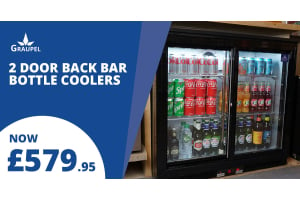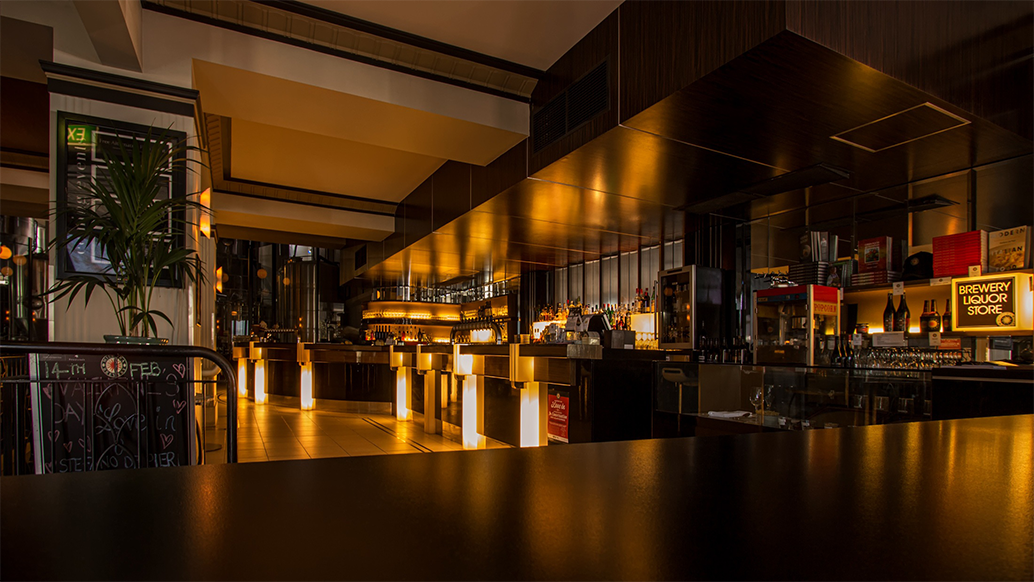
As any restaurant business owner will know, starting up a restaurant is no easy task, and a plethora of things need to be taken into consideration. You think about the menu, the food, who to hire, what drinks to serve. However, the one factor that will influence the success of your business tends to be overlooked — the design of your restaurant.
In an ever-growing crowded and oversaturated industry, the importance to stand out is more prevalent than it ever has been before. From research conducted in 2014 statistics confirm an appropriate interior design of a restaurant can produce a 300% increase in sales.
There are 5 significant areas of restaurant design in which improvements can be made.
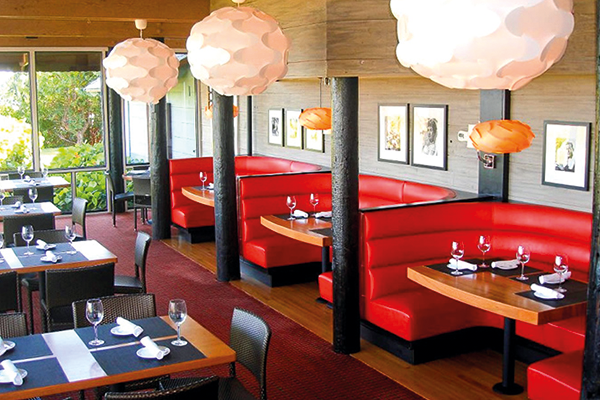
1. Colour
Colour has the power to convey and communicate meanings and messages without words; they can affect how customers feel and so is an essential factor to consider when choosing the colour palettes of your restaurant (and brand). Also, studies have shown that colour has a psychological effect on a person's appetite.
Strong Stimulants
- Red: Increases blood pressure and heart rate, increasing hunger.
- Orange: Increases mental activity, reminds of healthy foods and enthuse a comfortable feeling.
- Yellow: Makes a person feel happy and energetic.
Mild Stimulants
- Green: Brings in a feeling of healthy diet and abundance
- Turquoise: Associated with being happy and carefree
- Blue: Calms the body, induces sleep
Appetite suppressants
- Purple: associated with not so popular foods such as eggplant, purple cabbage etc.
- Brown: Reminder of burnt food or food that is overdone, has a dulling effect
- Black: Causes appetite to diminish
- Gray: can repel someone from the thought of food
In conjunction, read our other article about using coloured napkins with a meal to enhance food flavours. click here
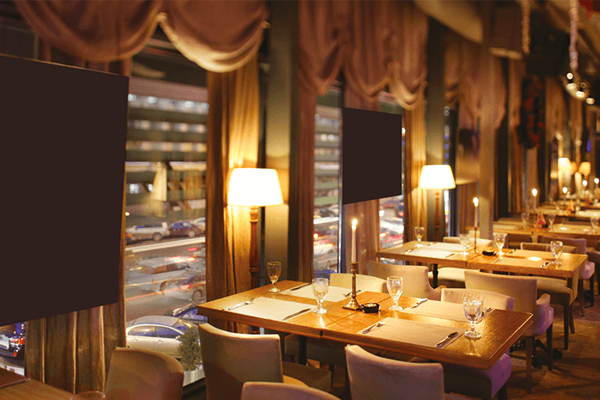
2. Lighting
Light creates ambience and a feel of a place, as well as the expression of a structure. It can be stimulating, motivating, relaxing or calming. A broad spectrum of knowledge concerning the biological effects of light has been scientifically verified in studies.
Lights affect behaviour in several ways.
- Brightness can be used to draw attention
- People tend to follow the bright lights
- People prefer to face illuminated walls
- Lighting can affect the position of the body
- Visibility of vertical and horizontal junctions helps in orientation.
There are three sections of lighting to plan:
Ambient - Use these to set the mood or make an impression.
Task Lighting – Providing enough light to be able to walk through a corridor safely.
Accent Lighting - Use this to add the wow factor to your interior.
To create a pleasant environment use wall lighting over direct ceiling lights. Using a non-uniform brightness is soothing; you must adjust according to the character of the interior.
To create a spacious environment, use an even distribution of lights with all surfaces illuminated uniformly, by providing high levels of lighting overall you remove any dark unlit areas from your area creating the feeling of more ambient space.
To create a relaxed environment, using a non-uniform distribution of illumination and lower light levels induces a comfortable and laid-back feel to your interior.
To create a visually clear area, use a high level and peripheral lighting. Also, make use of any natural light.
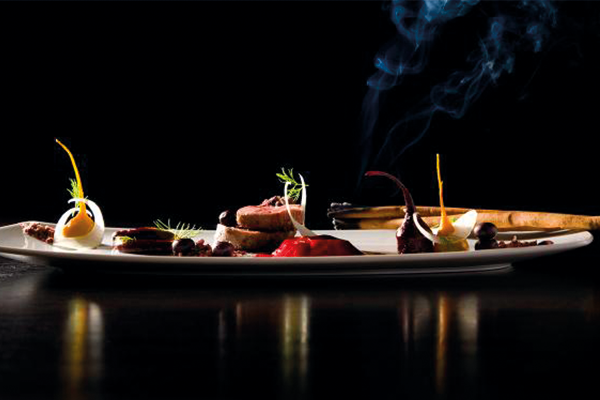
3. Smell
Your sense of smell can create comfort and connect customers to certain emotions as well as induce cravings for food. Implementing smell into your restaurant to influence customers can harm your sales.
In 2008 the coffee chain Starbucks discontinued their breakfast sandwiches as the smell of the cheese cooking on the grill and burning would overpower the smell of coffee.
Restaurants have been known to use the smell of baked bread or wood fire to influence a customer’s view of the restaurant. Also, some have been known to use air vents to infuse artificial scents.
Here are some different smells that trigger different effects on people.
- Vanilla: reduces stress and anxiety
- Baked Bread: homely, comforting and kind.
- Peppermint: alertness
- Apple: makes a room feel larger than it is
- Citrus: Refreshment and alertness
- Lavender: Relaxation.
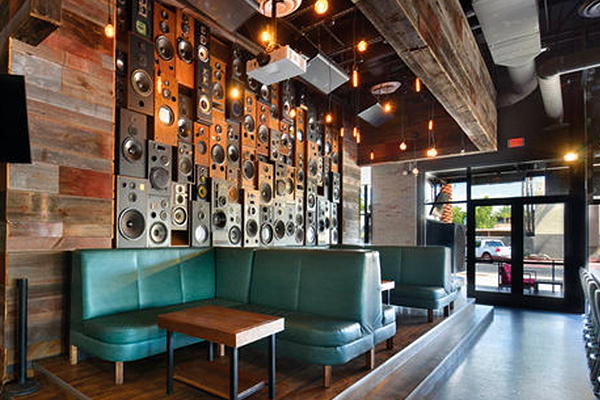
4. Acoustics/sound
Noise levels in restaurants are a growing concern for patrons, employees, and restaurant owners alike. Nationally known reviewers have started to include the loudness of restaurants as factors in their ratings. And with good reason. Recent surveys carried out suggest that noise complaints were ranked as the top most common complaint.
Loud and quiet are two attributes that should be well balanced; the extremes drive people away. Having a cool restaurant makes customers feel like conservations with their fellow diners can be heard by the tables next to them, in contrast, 1 in 4 customers complain about extremely loud environments in restaurants at least once.
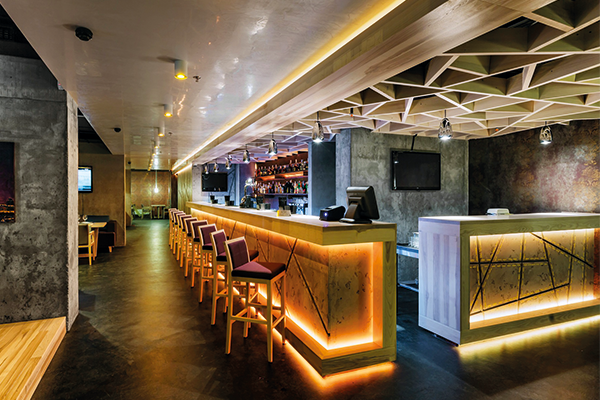
5. Architecture
The interior architecture will act as the foundation layer on which all the other aspects will be built around. Constructing the interiors can be tricky as there’s a lot to consider. It is essential to take time when designing your restaurant interior as the design will have a significant effect on the type of customer that is attracted to your business, if you are aiming to attract a specific target market, your interior should reflect the tastes of that market group.
Well-planned design contributes to the success, and the profits, of any dining establishment; it begins with market research, continues with understanding market trends and concludes with strategic execution.
Here are some things to consider
Diners need to see and be seen by the staff, ensure areas for eye contact with all tables are essential.
- Restrooms should be easily locatable, asking for directions might cause to become customer uncomfortable.
- Space between tables should be big enough to move around and allow waiters to get by. Tight spaces may cause waiters to drop orders of food and drinks if they collide with customers.
- The interior must blend in and not be blindingly obvious. The interior must display the theme and then allow the other factors of your restaurant design to attract and influence customers.
- Dining area ambience should cater to a varied customer base; sections may be created, if necessary.
- Accommodate for various dining group sizes, ensure you have seating for groups of 2, 3 or 4 as well as larger groups of 10 or more ( booths are an excellent way to create areas for more prominent groups)







